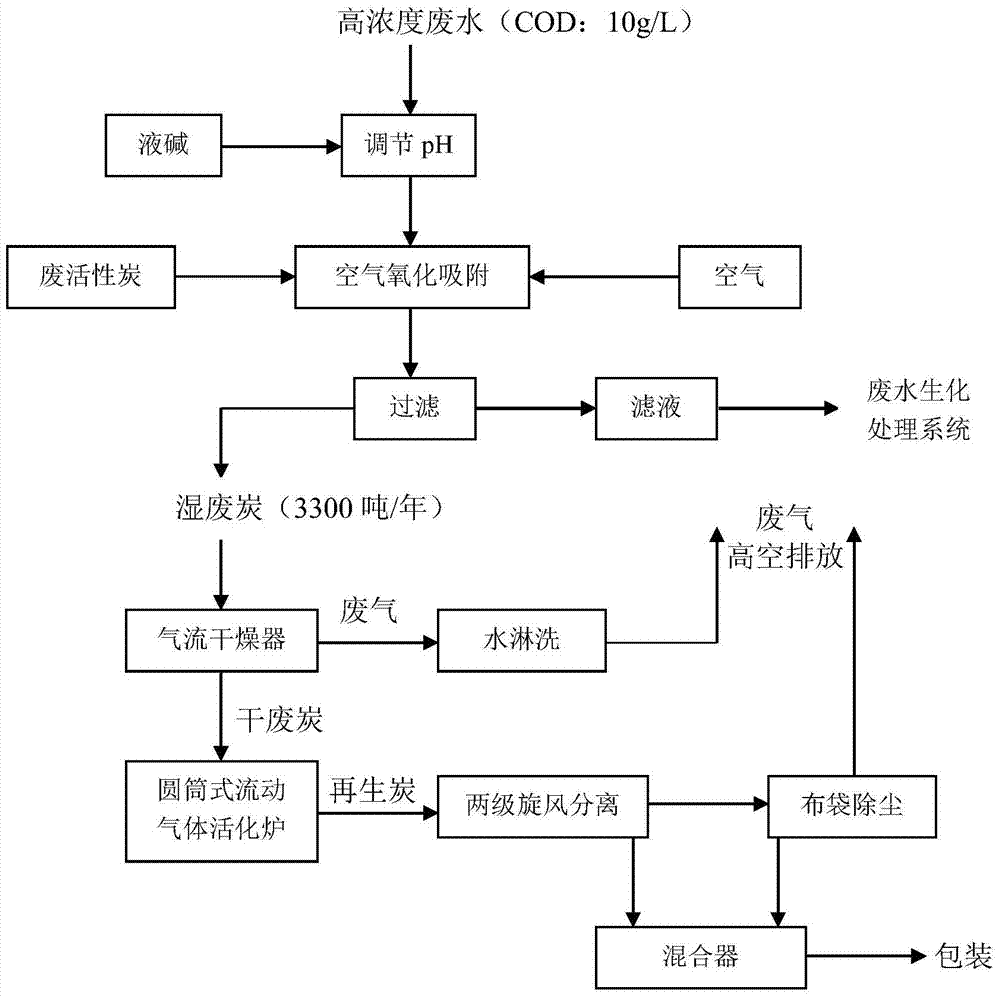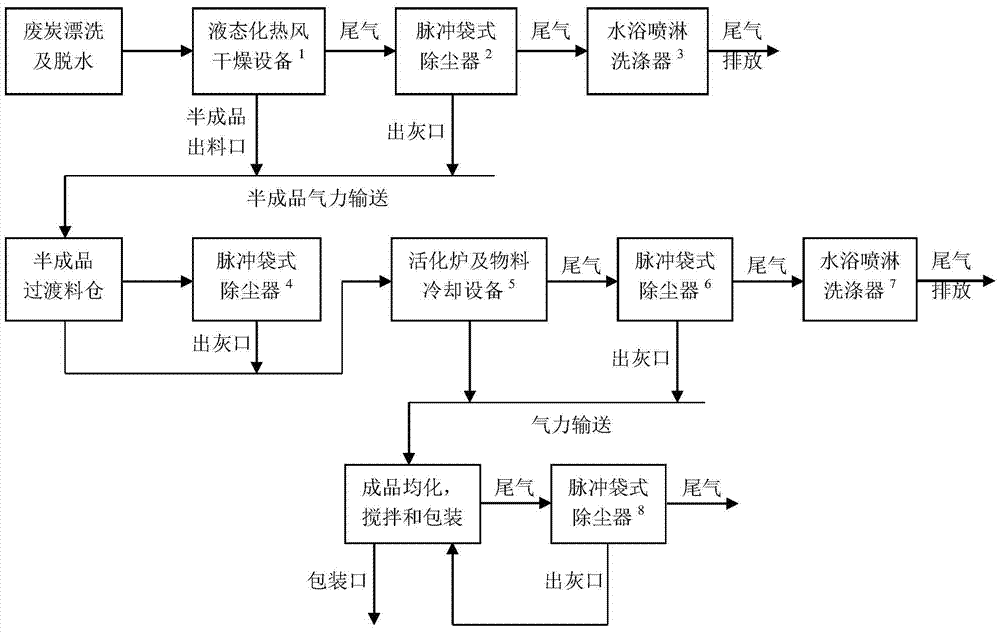Reuse process of waste activated carbon produced in acetaminophen refining section
A technology of acetaminophen and waste activated carbon, which is applied in the petroleum industry, filter regeneration, water/sludge/sewage treatment, etc., can solve the problems of high treatment costs, harsh oxidation conditions, high requirements for equipment and supporting facilities, and achieve The effect of reducing consumption, reducing production costs, and reducing pollutant discharge
- Summary
- Abstract
- Description
- Claims
- Application Information
AI Technical Summary
Problems solved by technology
Method used
Image
Examples
Embodiment
[0022] 1. Wastewater pretreatment process:
[0023] ① Adjust the pH of the wastewater to about 5-8 (preferably 7) with alkali,
[0024] ②The oxidation-polymerization reaction is carried out by introducing air at a temperature of 30-90°C (preferably 50-80°C),
[0025] ③Add a certain amount of waste carbon (10-20% w / v) to adsorb the formed oxidation polymerization product,
[0026] ④ After filtering the activated carbon, the color of the waste liquid becomes lighter obviously, from dark brown to light yellow or light red, and the COD also drops significantly. The remaining COD in the pretreated waste liquid is basically formed by acetic acid after analysis, and can enter the biochemical treatment system .
[0027] ⑤The waste charcoal that has been pretreated by wastewater enters the waste charcoal regeneration system.
[0028] 2. Waste carbon regeneration process:
[0029] ① The waste activated carbon is screened by a screening machine to remove large impurities in the waste...
PUM
| Property | Measurement | Unit |
|---|---|---|
| color fastness | aaaaa | aaaaa |
Abstract
Description
Claims
Application Information
 Login to View More
Login to View More - R&D
- Intellectual Property
- Life Sciences
- Materials
- Tech Scout
- Unparalleled Data Quality
- Higher Quality Content
- 60% Fewer Hallucinations
Browse by: Latest US Patents, China's latest patents, Technical Efficacy Thesaurus, Application Domain, Technology Topic, Popular Technical Reports.
© 2025 PatSnap. All rights reserved.Legal|Privacy policy|Modern Slavery Act Transparency Statement|Sitemap|About US| Contact US: help@patsnap.com



